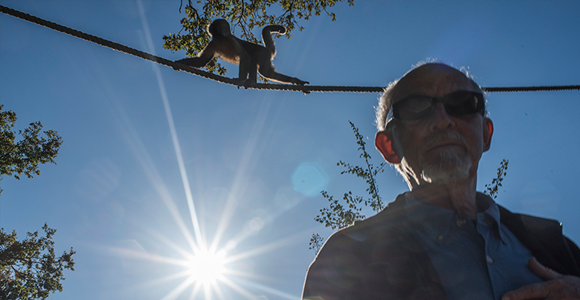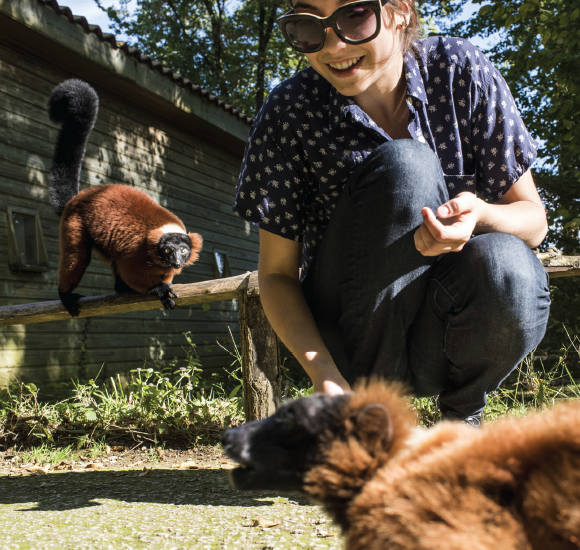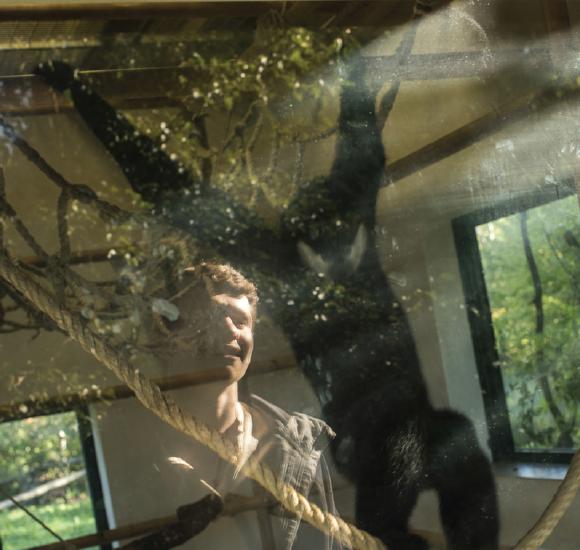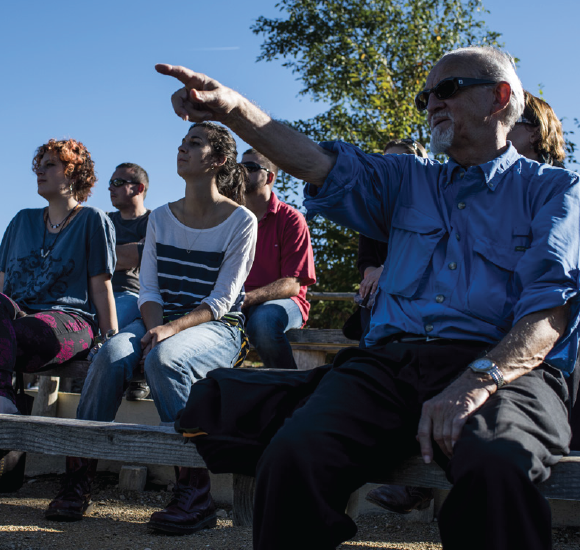
Dawn of the planet of the apes
At La Vallée des Singes, Primates and Human Evolution students ponder which incarcerated ape they would choose to be.
Carrie Golus, AB’91, AM’93
Saturday’s journey to La Vallée des Singes—in Romagne, about 240 miles southwest of Paris—begins at 7:12 a.m. at Montparnasse Station. This is the seventh year that UChicago anthropologist Russell Tuttle, who’s 75, has made the trip; his wife Marlene is on her third visit. As the high-speed TGV train streaks through the countryside, the sky lightens to reveal fields draped in mist. All of Tuttle’s students are napping, one facedown on the table.
Just past nine, we’re met at Poitiers station by a chartered bus; it’s an additional 45-minute drive to the monkey preserve. The bus speeds down narrow country lanes, past fields of corn and a yard of fat white geese, at one point stopping to let a tractor pass.
“Don’t take anything unnecessary into the park,” Tuttle reminds everyone, “because the monkeys will grab things.” A sign outside the entrance emphasizes that it’s particularly important not to snack around the monkeys: “Les singes sont d’habiles pickpockets, il est inutile de les tenter.” (The monkeys are skilled pickpockets, it is useless to tempt them.)

At the ticket counter, the cashier updates Tuttle on the changes since his last visit: two baby bonobos have been born, there’s a new female from Spain (“The old female don’t like her”). She also reiterates the park’s rules, which include “If you smoke, not where the monkeys are living.”
Tuttle leads the group over to the gibbon area. Something small drops from a tree. A chestnut? Let’s hope so. “Remember,” says Tuttle, “if they’re feeding, they’re pooping.”
A male gibbon—safely on the other side of a moat—swings and spins on ropes hung above the ground. The students watch him in delight, gasping and laughing.

“Woo! Woo!” Tuttle calls. That gets his attention. Both the male and the female retreat to their enclosure, a small wooden house right next to the walkway. Bang! The male swings forcefully against the window of the house. “He’s threatening us,” Tuttle explains. “Maybe our smiling is taken as a threat too.”
The male crashes against the window again, unintentionally giving the students a close-up glimpse of his long, thin hand and long, thin, black nails. “Oh! He hit me right in the face,” says Tuttle. “Yes, I’ve made an enemy.”
Later, the group watches the scheduled feedings of the gorillas and the bonobos—a farm-to-table lunch of carrots, endives, and tomatoes. Then we ride the bus back to the village for our own repast: trout terrine, duck confit, green beans, potatoes mashed with olive oil.

After lunch the students split up to gather material for their papers—due in class at 9:30 on Monday morning, in less than 48 hours. The question: “Which of the incarcerated apes at Menagerie du Jardin des Plantes”—last week’s excursion—“or La Vallée des Singes would you choose to be? (‘None’ is an unacceptable answer.)”
It’s turned into a stunningly warm afternoon. This is one of the last Saturdays of the year that the park is open to visitors. In the winter, its inhabitants—native to much warmer areas—prefer to remain in their enclosures.
On the train back to Paris, several students pull out laptops or tablets and begin typing out their drafts. At one point a student with a question leans across the aisle to ask her professor then and there. By the time the train arrives at Montparnasse, she’s written five pages.
“I’ll probably work on it some more when I get home,” she says, meaning her small single room in the American House of the Cité Universitaire. For these 10 short weeks, when she’s lodging in Paris, she can imagine herself not just as a captive primate, but also as a Parisian.
